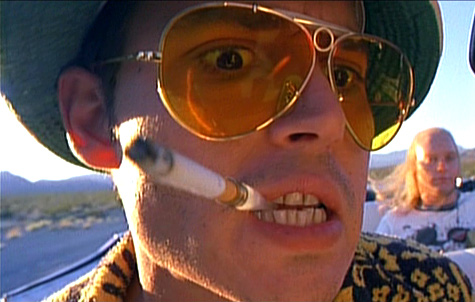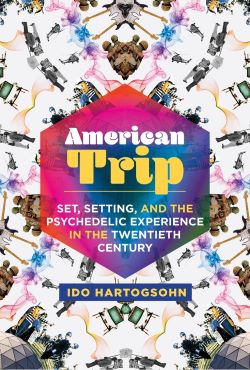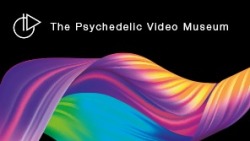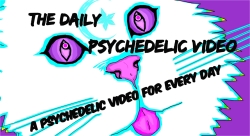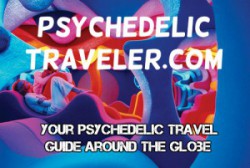A short history of the cinematic trip
The history of cinema presents us with a considerable number of attempts to recreate the psychedelic experience[1], an experience which confronts the cinematic artist with an extraordinary challenge – to capture a deeply physical, emotional, mental and spiritual experience through the limited means of sound and moving picture.
This short list of cinematic renditions of psychedelic trips is not intended to offer a complete list of the genre. It is only a selection of some of what I consider to be the more interesting and influential trip sequences in the history of cinema. Some of the trips depicted in these videos are magical and enchanted while others are vicious and vile; some are divine and purging while others are funny or just weird. This is of course due to the manifold aspects of the psychedelic experience, which appears in many forms, in life as well as in the movies.
Before the 1960s
The first trips in cinema were animated and often involved animals which got terribly stoned under curious circumstances. Felix the Cat (1927), a pioneering example, is a silent film in which the Felix the cat eats a shoe and a tin can from the garbage and experiences some kind of strange iron poisoning which send him into a delirious world of hallucinations where he is chased around by a giant chicken, sees Santa Claus transforming into a witch, and fights an imaginary cat which keeps turning into a sausage. The trip sequence in this video starts at 4:13.
Another early animated attempt to recreate the psychedelic experience in film can be found in Disney’s Dumbo (1940). Here, the flying elephant drinks magical water out of the well and is transported into a powerful hallucinatory state in which he beholds dancing pink elephants and fractal, kaleidoscopic visions. Peter Stafford’s “Psychedelic Encyclopedia” claims that the chief visualist for Disney’s Fantasia (1940) participated in the mescaline experiments conducted in Germany by Kurt Beringer during the 1920′s; and Artist Paul Laffoley claims that Disney himself experimented with Mescaline “On a regular basis” during his stay in Germany in the 1930′s. So that the relation between 1940s Disney films and psychedelics is still far from clear.
The sixties
A great number of films dealt with the psychedelics during the 1960s, when the psychedelic movement was in full swing. Most of these films, like “Wild in the Streets” and “The love ins”, were B movies of which tried to capitalize on the hippie phenomenon by turning it into a sensation. Many of these films were done in the tradition of exploitation cinema, indulge in the use of nudity as a cheap thrill and have a rather voyeuristic character.
Roger Corman’s “The Trip” which was based on a script by Jack Nicholson (who is also known for his interest in psychedelics), is a movie dedicated to the description of one long and deeply meaningful trip. Peter Fonda, who plays the protagonist, was known at the time as one of the leading representatives of the burgeoning counterculture inHollywood, and the film sometimes carries a somewhat naïve yet appealing character of trying to make a point for the psychedelic experience.
The Easy Rider cemetery trip scene (here, regrettably, in Italian dubbing) is another classic 1960s cinematic rendition of the psychedelic trip experience. Peter Fonda and Dennis Hopper visit the Mardi Gras festival and then arrive at a cemetery, where they ingest LSD together with two prostitutes. The scene makes use of fish eye lenses, unusual camera angles, background noises and an hectic editing style to capture the psychedelic experience.
Altered States (1980)
The eighties were not a particularly psychedelic decade, however in 1980 Ken Russell directed “Altered States” a fascinating and awfully troubling film which is loosely based on the character of isolation tank pioneer John C. Lilly, who experimented with the conjoined use of LSD and isolation tanks in the beginning of the 1960s.
This film could be called a psychedelic horror film, as it is strewn with incredibly dark visions in which the hero meets the Devil, baphomet and other demonic apparitions. This particular scene is replete with biblical motives and religious symbols, and has an extremely sinister atmosphere. Beside the use of dramatic music, slow motion and esoteric symbols the scene is especially notable for its elaborate use of blue-screen techniques for the recreation of the visionary experience.
Fear and Loathing in Las Vegas (1998)
In 1998 Terry Gilliam released his brilliant version of the book “Fear and Loathing inLas Vegas” written by gonzo writer Hunter S. Thompson, which featured Johnny Depp as the drug obsessed reporter Raoul Duke.
In this unforgettable scene, Duke walks into aLas Vegashotel loaded with an incredible mixture of mind bending drugs. The result is one of the funniest descriptions of an hallucinatory experience in film. Gilliam does extraordinary work in capturing the dynamics of the psychedelic experience, and uses the newly arrived CGI effects to create the visual distortions typical to a psychedelic trip. However, Gilliam has more than just technology going for him. He also has an amazing talent for capturing the highly weird and bizarre form of perception which can turn the world into a carnival of weird mutants during a psychedelic trip.
Blueberry (2004)
“Blueberry” (A.K.A “Renegade”) is a rare film in the sense that it has a unique trip-like feeling from beginning to end. The “Blueberry” trip sequence has already reached a certain cult status on the web and become one of the best known cinematic descriptions of the ayahuasca experience.
While the sequence heavily relies on CGI effects, and is in that sense typical to the digital turn in the cinematic renditions of psychedelic trips – it is also breathtakingly beautiful. The relentless and exquisite movement between different layers and dimensions during the trip recreates the multi-dimensionality of the psychedelic experience in an extraordinary way.
Taking Woodstock (2009)
The “Taking Woodstock” trip sequence, is in my eyes a work of cinematic and psychedelic genius. It manages to capture a graceful psychedelic experience in a delicate and incredibly nuanced way, which is in my eyes, the most sensitive treatment of the psychedelic experience to this day.
This is not incidental, as the makers of “Taking Woostock” actually did thorough research on the subjective effects on psychedelics, and how these could be tastefully and effectively adapted to the screen. The result has been called “a stunner with overlapping pastel lighting effects, green-screen animation, shifting film speeds, lens trickery and undulating CGI…”
Viewing this sequence, I can almost feel what the protagonist is feeling as he slowly enters his psychedelic journey. The sequence pays great attention to the gradual movement into a different order of perception: the sublime glowing of the colors and the orgasmatic shivers of the skin and palpitations of the heart. It enfolds in a way which is typical for many psychedelic experiences: from the womb-like feeling of the caravan, into the magical world outside and onward into a spectacular peak experience where Jake watches the Woodstock crowd turn into one vibrating tissue and his eyes are filled with tears of awe and joy.
[vimeo http://vimeo.com/11696950]A psychedelic cinematic quest
The attempts to recreate the psychedelic experience in cinema will always be incomplete at best. Capturing such an all encompassing experience through the use of visual and audial means alone is after all a task which can not be performed in an entirely faithful way. However, by examining the history of the psychedelic experience in cinema, one is confronted with the various audacious attempts of performing this task, which teach us not only on the limitations of cinema but also on its ability to act as a mind-altering medium, even to the degree of mimicking the effects of mind-altering substances, a psychedelic cinematic quest which will surely continue to enfold in the coming years, simultaneously with the evolution of media.
[1] When writing of movies which attempt to recreate the psychedelic experience, I am referring here not to movies which have a visually psychedelic qualities such as “2001: A Space Odyssey”, “Charlie and the Chocolate Factory”, “Speed Racer” – but only to films which show one of the protagonists consume some kind of hallucinogenic substance (equivalent to a psychedelic) and then try to recreate his experience for the viewer.
